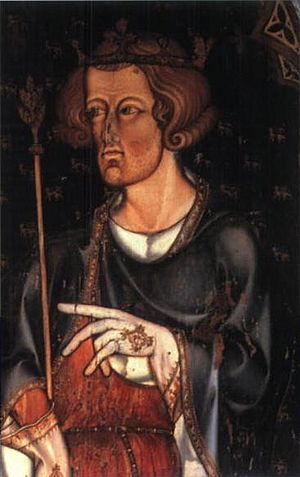Darnhall Abbey facts for kids

Darnhall Abbey was a Cistercian abbey, a type of monastery, built in the late 1200s in Darnhall, Cheshire. It was started by Lord Edward, who later became King Edward I. He founded it around 1270. The Abbey's own story says he did this to thank God for saving him and his ships from a big storm at sea. The Abbey was dedicated to St Mary.
Darnhall Abbey did not last long in its first location. The place chosen for it was not suitable. Also, King Edward did not give enough money at first. So, the Abbey was allowed to trade wool to earn more money. The monks soon moved the Abbey a few miles north. The new place became the famous Vale Royal Abbey. The old Darnhall Abbey buildings then became a monastic grange, which was like a farm for the new Abbey. It seems there was only one Abbot (the head monk) at Darnhall before it moved in 1275.
Contents
Why Was Darnhall Abbey Started?
King Edward founded Darnhall Abbey, dedicated to St Mary, between 1266 and 1272. Its official founding paper is from January 14, 1274. The Abbey's own history tells a romantic story about why it was built. It says the King made a promise when he was still a prince. He was supposedly caught in a terrible storm at sea and feared for his life. He promised the Virgin Mary he would build an abbey for her if they were saved.
The story says the seas calmed right away, and the ships returned safely to England. As soon as the last person stepped ashore, the storm started again, even worse than before! Edward's ship was even smashed in the harbor. However, these dates do not quite fit with history. King Edward only went on a Crusade once, in 1270. He did not return until his father, King Henry III, died in 1272. By then, the Abbey's founding paper was already written.
The founding paper did mention the King being "sometime in danger upon the sea." Some historians think this might refer to a stormy trip across the English Channel in the 1260s. Another idea is that Edward founded the Abbey as a request for protection for his future journey, not for rescue from a past event. This makes sense because the first paper about the project was dated August 1270, just before he left on Crusade.
How the Abbey Began
Monks came to Darnhall from other abbeys nearby, especially Dore Abbey. It seems a group of monks lived at Darnhall from about 1268. Dore Abbey was likely chosen because Lord Edward had been held there from 1264 to 1265. This was during the Second Barons' War, when Simon de Montfort had him imprisoned. The monks at Dore were said to have treated him well.
The monks were allowed to choose the exact spot for Edward's new Abbey. To support the Abbey, it was given land in Delamere Forest. It also received the rights to collect rent and services from the villages of Darnhall, Cheshire, and Langwith. The Abbey also gained the right to choose priests for churches in Frodsham, Weaverham, and Ashbourne and Castleton.
The Abbey was first planned to hold 100 monks. However, the money and land given were not enough for so many. So, the usual number of monks became thirty. King Edward was not in a hurry to finish the Abbey. His plans were delayed by the Barons' War, which involved him being imprisoned and fighting. Even in 1271, his father, King Henry III, was asking other abbeys to donate religious books to the new place Edward had "begun to found."
The monks did not seem to be welcome from the start in Darnhall. By 1275, the villagers of Darnhall tried to stop providing the services and payments the Abbey claimed from them. This was just the start of a long fight between the Abbey and the villagers that lasted for about 50 years.
How the Abbey Made Money
For the few years it was open, the wool trade was the main way the Abbey earned money. In 1275, for example, the Abbey was allowed to collect twelve sacks of special wool. This wool was as good as that collected by a nearby rival, Dore Abbey. The wool was then checked and prepared by a merchant's agent. The Abbey had to provide food and a place to stay for this agent. Finally, the wool was taken to a port, also at the Abbey's cost, before being shipped to other countries.
Why Darnhall Abbey Moved
Soon after 1275, it was decided that Darnhall Abbey's location was not good. We do not know the exact reason why. King Edward allowed the monks to choose a new place anywhere in England. But they did not move far, only about four miles. They picked a new spot near Darnhall called Wetenhalewes, north of the original site. The new Abbey was named Vale Royal Abbey. The old buildings at Darnhall then became a monastic grange for Vale Royal, like a farm or outpost.
Who Was the Abbot of Darnhall?
The first Abbot (head monk) of Darnhall was named Walter. He was in charge during the last years of King Henry III's rule. There are very few mentions of him in old records. One brief mention is in the Chester court papers. Walter's exact dates are not clear. He might have been followed by an Abbot named Henry. However, there is so little proof for Henry that it is likely a mistake in writing, and Walter was the only Abbot until around 1273. Either way, by the time the next Abbot, John Chaumpeneys, became Abbot in 1275, Darnhall Abbey had already moved to Vale Royal.

